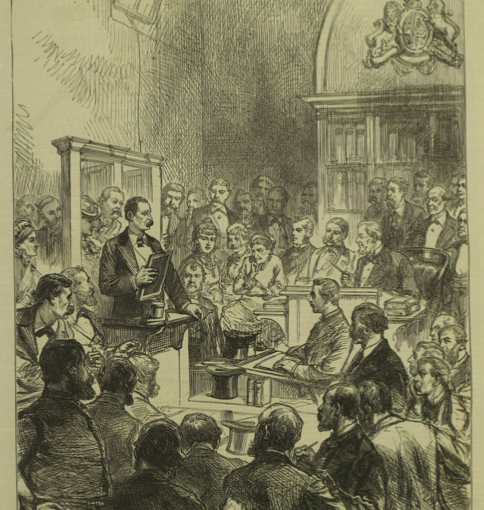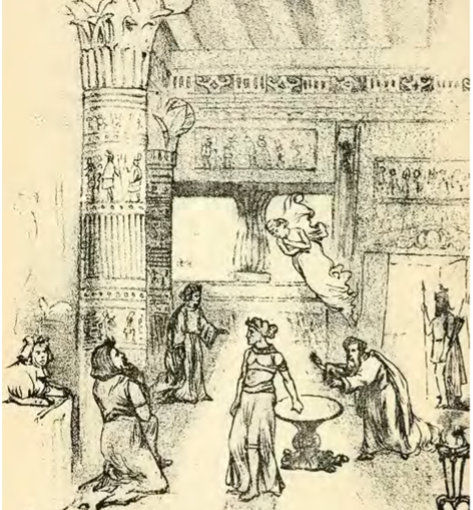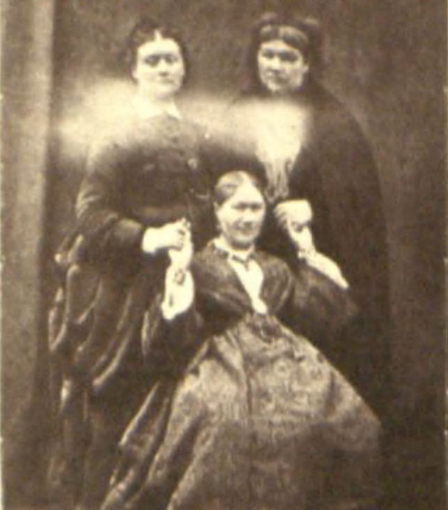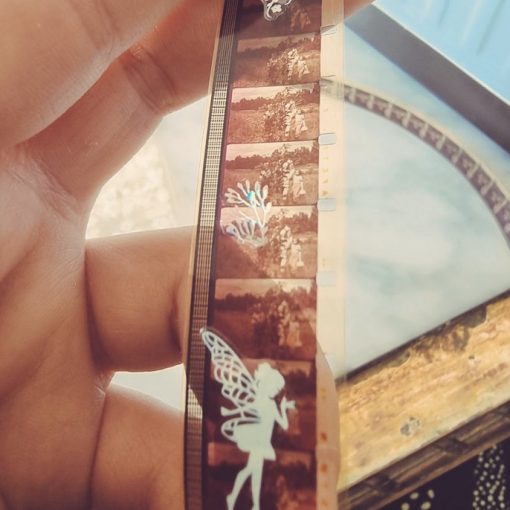Samuel Glauber-Zimra, Ben Gurion University of the Negev
For several months in 1932, John Myers was the most famous spirit photographer in England. A member of the London Jewish community, although not particularly observant himself, Myers’s rapid rise and fall drew in several other prominent British Jews, both living and deceased. While a small but influential Jewish community had lived in England since the readmission of Jews in the seventeenth century, a wave of Jewish immigration, primarily from the Russian Empire, began in the 1880s that swelled its ranks to the hundreds of thousands.[1] As Jewish immigrants acclimated to British culture, many took up spiritualism. The story of Anglo-Jewish spiritualism has only now begun to be told, and involves rabbis and communal activists, acculturated middle-class Jews and recent Yiddish-speaking immigrants.[2] John Myers, Jewish spirit photographer, took an important, if now-forgotten, part in this story.
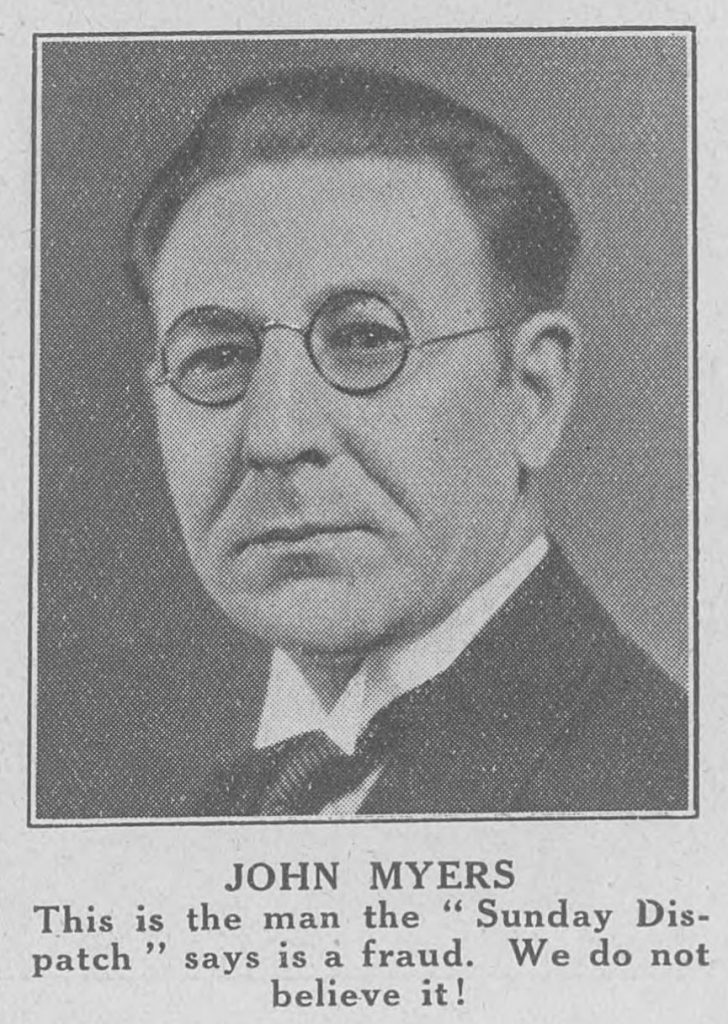
As UCL historian Michael Berkowitz has written, Jews played a prominent role in the history of photography in Britain.[3] Spirit photography, it transpires, was no exception. As other posts on the Media of Mediumship blog have shown, spirit photographs appealed as material impressions of ostensibly spiritual presences. As we will see, Myers’s alleged feats were dogged by this-worldly accusations, namely, fraud and copyright infringement. Myers, who was married to the daughter of an Orthodox rabbi, was working as a dentist when he first discovered spiritualism in 1931. Assisted by members of the Victoria Psychic Research Society in London, he attended séances with the spirit photographer A. E. Deane, who encouraged Myers to take up spirit photography himself. Maurice Barbanell, the Jewish spiritualist activist and longtime editor of Psychic News, was present for Myers’s first successful séance, in which he developed a photograph containing a spirit “extra” of the famed Jewish writer Israel Zangwill (1864–1926), who is best known for works such as Dreamers of the Ghetto (1898) and The Melting Pot (1909). An account of the séance, published shortly afterwards on the front page of Psychic News, foregrounds the material elements at play:
“At this séance, as, I suppose, at all séances, the proceedings started with an invocation. After that, the plates, still in the packet, were passed round the group to be “magnetised.” I had characteristically crossed my legs, but I was asked to uncross them before I touched the packet as otherwise the flow of magnetism or vibrations would be impeded. Each sitter seemed to treat the plates in a different way. One clasped the packet in both hands, shut his eyes, and remained motionless for a considerable time. Others stroked the plates, others drew their fingers along them-—everyone seemed to do it differently.”[4]
Zangwill’s spirit, incidentally, was a not-infrequent presence at séances in the 1930s. Earlier that year, it was reported in the press that the well-known medium Meurig Morris was in touch with Zangwill, who, she claimed, was collaborating with her on a new play titled “Dramatists on the Other Side.”[5] There was, in fact, a pecuniary element to the story: Laurence Cowen, the brother of Zangwill’s childhood friend and a fervent believer in Morris’s mediumship, had paid her an advance for an original work by the deceased playwright. Whatever the circumstances, news of Zangwill’s postmortem drama quickly spread to the Jewish press in Eastern Europe, where it was publicized in Yiddish newspapers in Warsaw and Vilna, then both part of Poland.[6] Zangwill would appear at least once more at a London séance held with the Jewish medium Joseph Benjamin in 1940.[7]
Myers’s spirit photography would quickly reappear on the front page of Psychic News in connection with a Jewish subject, this time living. Six weeks after publishing the Zangwill spirit photograph, the newspaper ran a headline that read “Jewry’s Bravest Rabbi: Great Scholar Vouches for a Spirit Photograph.” Barbanell, it transpired, had arranged a spirit photography séance at the home of Rabbi Dr. Moses Gaster (1856–1939), a venerated scholar and former chief rabbi of the Spanish and Portuguese Jewish congregation of London. Gaster, who had long maintained a scholarly interest in Kabbalah and Jewish magic, had recently begun to speak out on behalf of spiritualism in Jewish circles; in late May of that year he delivered a lecture to the Jewish Society of Psychical Research defending the practice of spiritualism from the standpoint of Judaism, any apparent biblical prohibition against necromancy notwithstanding.[8] In his sitting with Gaster, Myers produced a photograph of the rabbi, obscured by the spirit extras of former British prime minister Benjamin Disraeli, who was of Jewish origin, and the father of Dora E. Blumenthal, the president of the Jewish Society for Psychical Research and a friend of Gaster. The rabbi, Psychic News reported, declared that “what occurred in my house when Myers took those pictures is perfectly genuine.”[9]

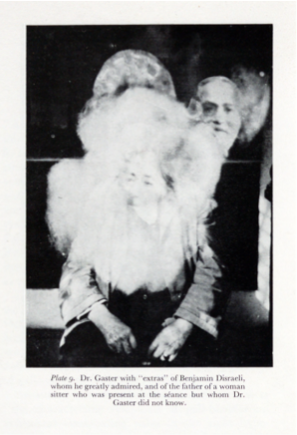
Gaster’s endorsement of Myers’s spirit photography was a boon to Barbanell’s efforts to win over his fellow co-religionists, even it was conspicuously ignored by the local Jewish press. Barbanell went so far as to proclaim that Myers “has made a gap in the wall of Orthodox Jewry” and claimed that “as a result, thousands of Jews, with their earnest, penetrating and enquiring minds, will soon start an examination of Spiritualism, helped by Dr. Gaster’s courageous statements.” The silence of the London Jewish press, in any case, did not prevent the publication of a lengthy spread on Myers’s spirit photography in a Yiddish magazine printed in Warsaw.[10]
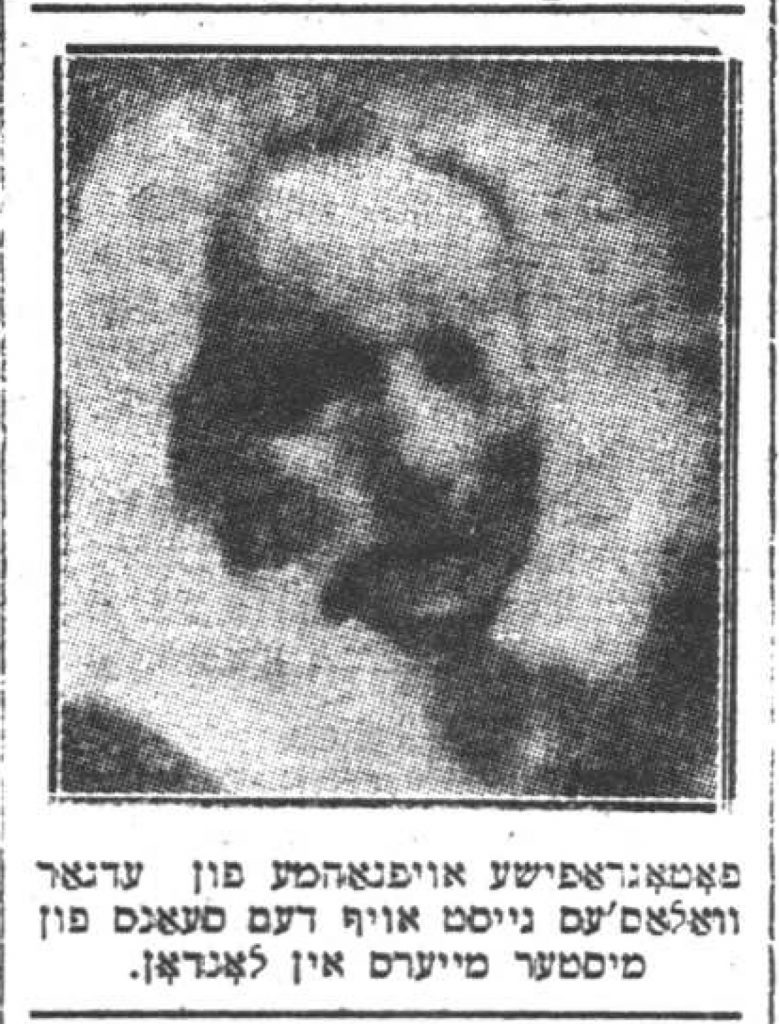
Myers’s reputation was tarnished soon after by an investigative reporter from the London Sunday Dispatch, Edward Chichester, 6th Marquess of Donegall. Chichester issued a public challenge to Myers to hold spirit photography séances with him. The Marquess determined that Myers obtained his spirit extras through fraudulent means, surreptitiously substituting the signed glass plates the former had brought with his own that had previously been exposed to images sourced from the newspaper.[11] Word spread as far as Eastern Europe—before long a headline appeared in a Yiddish newspaper in Warsaw proclaiming that “A Dead Israel Zangwill Falls Victim to a Living Fraudster in London.”[12] Barbanell, who later penned a sympathetic history of the spirit photographer’s life, printed a full-throated defense of Myers in Psychic News, but the latter never regained his former status.[13]
Yet this was not the last of Myers’s troubles. Shortly after the publication of the Zangwill spirit photographs in June 1932, Herbert Sheed, a press photographer, approached Barbanell and claimed that the image of Zangwill produced by Myers was, in fact, taken from an existing photograph whose rights he owned, and thus constituted a copyright violation. Barbanell, who is our only source at this stage, writes that he assuaged Sheed of his concerns by demonstrating the authenticity of Myers’s mediumship and that Sheed signed a statement dropping his claims.[14] Four years later, Prediction, a British occult journal, published a reproduction of the Zangwill spirit photograph in an article by Barbanell on Myers.[15] This time Sheed, who evidently had not dropped his claims, took greater umbrage. In addition to restating his claims in a letter to the journal and demanding royalty fees, Sheed produced an exact imitation of Myers’ spirit photograph using his photograph of Zangwill taken during the writer’s lifetime.[16] What was at stake was not merely claims of fraud, but whether intellectual property laws governed likenesses reproduced under the guise of spirit photography. It was the very resemblance of spirit extras to known individuals that rendered spirit photographs so convincing to some, yet this same resemblance was perhaps a violation of intellectual property rights. This time the final word was not with Barbanell and the question was left unsettled, at least on the pages of Prediction.
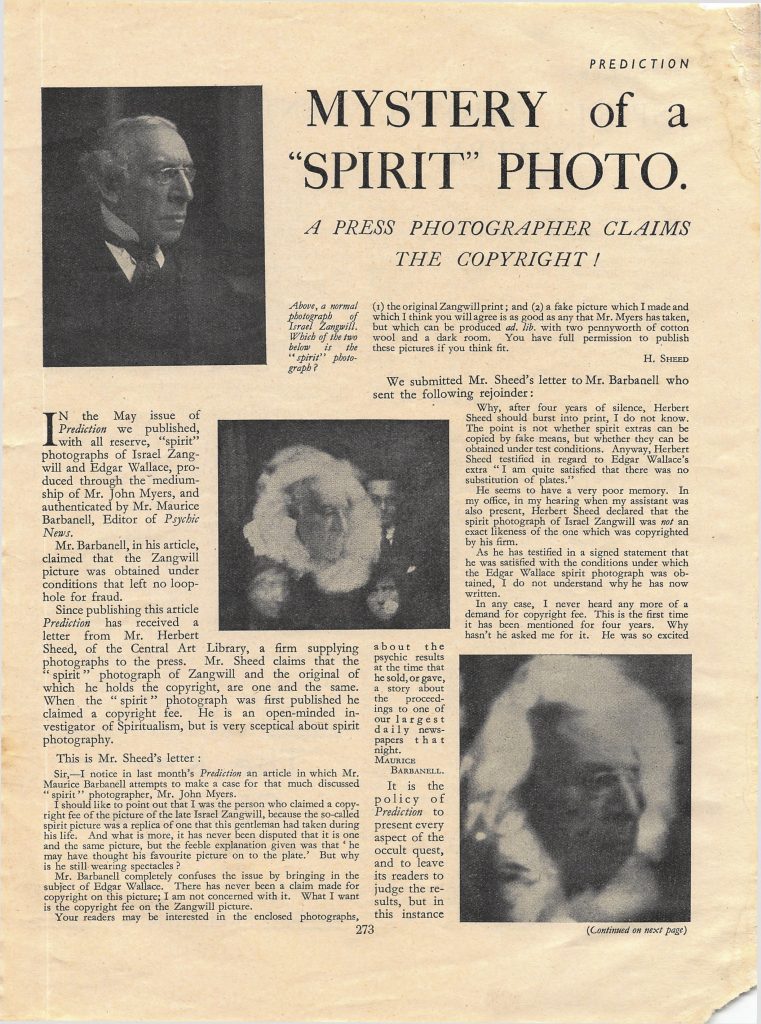
There are many layers to the story of John Myers, Jewish spirit photographer. His various debacles highlight the pitfalls of spirit photography. By adopting technology as a method of spirit communication, spiritualists pursued objectivity yet subjected themselves to both claims of fraud and legal norms governing photography that were not sympathetic to the spiritualist cause. Moreover, as a Jewish spirit photographer who both photographed Jewish subjects and produced photographs of alleged Jewish spirits, Myers exemplifies the active role that many British Jews took in the spiritualist movement’s final heyday in 1930s England, one that is only now being remembered.
Samuel Glauber-Zimra is a PhD candidate in the Department of Jewish Thought at Ben-Gurion University of the Negev. His dissertation explores Jewish engagement with modern occult currents in early-twentieth-century Eastern Europe. His research has appeared in Nashim, Jewish Historical Studies, Correspondences, and Kabbalah, and he is the co-editor of Hillel Zeitlin, In the Secret Place of the Soul: Three Essays (Jerusalem: Blima, 2020) [Hebrew]. Samuel can be reached at glauber@post.bgu.ac.il and @samzimra.
[1] Todd Endelman, The Jews of Britain, 1656 to 2000 (Berkeley: University of California Press, 2002).
[2] Samuel Glauber-Zimra and Boaz Huss, “‘No Religion Could be More Spiritual than Ours’: Anglo-Jewish Spiritualist Societies in the Interwar Period,” Jewish Historical Studies: Transactions of the Jewish Historical Society of England 53 (2022): 83–104.
[3] Michael Berkowitz, Jews and Photography in Britain (Austin: University of Texas Press, 2015).
[4] A. W. Austen, “Israel Zangwill Returns: A Perfect Spirit Photograph,” Psychic News (London), June 25, 1932, 1
[5] “Spiritualist Questioned in Libel Suit,” Evening Telegraph and Post (Dundee), April 6, 1932, 1,
[6] “Yisroel Zangvil diktirt a drame fun yener velt…” Vilner radyo (Vilna), April 14, 1932, 2.
[7] “Israel Zangwill’s Spirit Returns,” Psychic News (London), March 23, 1940, 3.
[8] “Judaism and Psychic Research: Address by Haham Dr. Gaster,” Jewish Chronicle (London), June 10, 1932, 14.
[9] Maurice Barbanell, “Jewry’s Bravest Rabbi: Great Scholar Vouches for a Spirit Photograph,” Psychic News (London), July 23, 1932, 1.
[10] “’Nishto keyn patenten oyf gayster,” Der hoyzfraynd 1, no. 33 (September 22, 1932): 12–13.
[11] The Marquess of Donegall’s challenge and subsequent articles on Myers appear in the Sunday Dispatch of September 25, October 9, October 16, October 23, and October 30, 1932.
[12] “Fershtorbener Yisroel Zangvil vert der korbn fun a lebendiger shvindler in london,” Unzer express (Warsaw), December 12, 1932, 4.
[13] See, for example, “Myers ‘Exposure’ Exposed: Our Case Rests not on Plates but on Faces,” Psychic News (London), October 22, 1932, 1; Maurice Barbanell, He Walks in Two Worlds: The Story of John Myers (London: Herbert Jenkins, 1964).
[14] Maurice Barbanell, “Edgar Wallace as a Spirit Extra,” Psychic News (London), September 17, 1932, 5.
[15] Maurice Barbanell, “I Have Photographed the Dead: Famous Spiritualist’s Claim,” Prediction 1, no. 4 (May 1936): 162–63.
[16] “Mystery of a ‘Spirit’ Photo: A Press Photographer Claims the Copyright!” Prediction 1, no. 6 (July 1936): 273–74.
